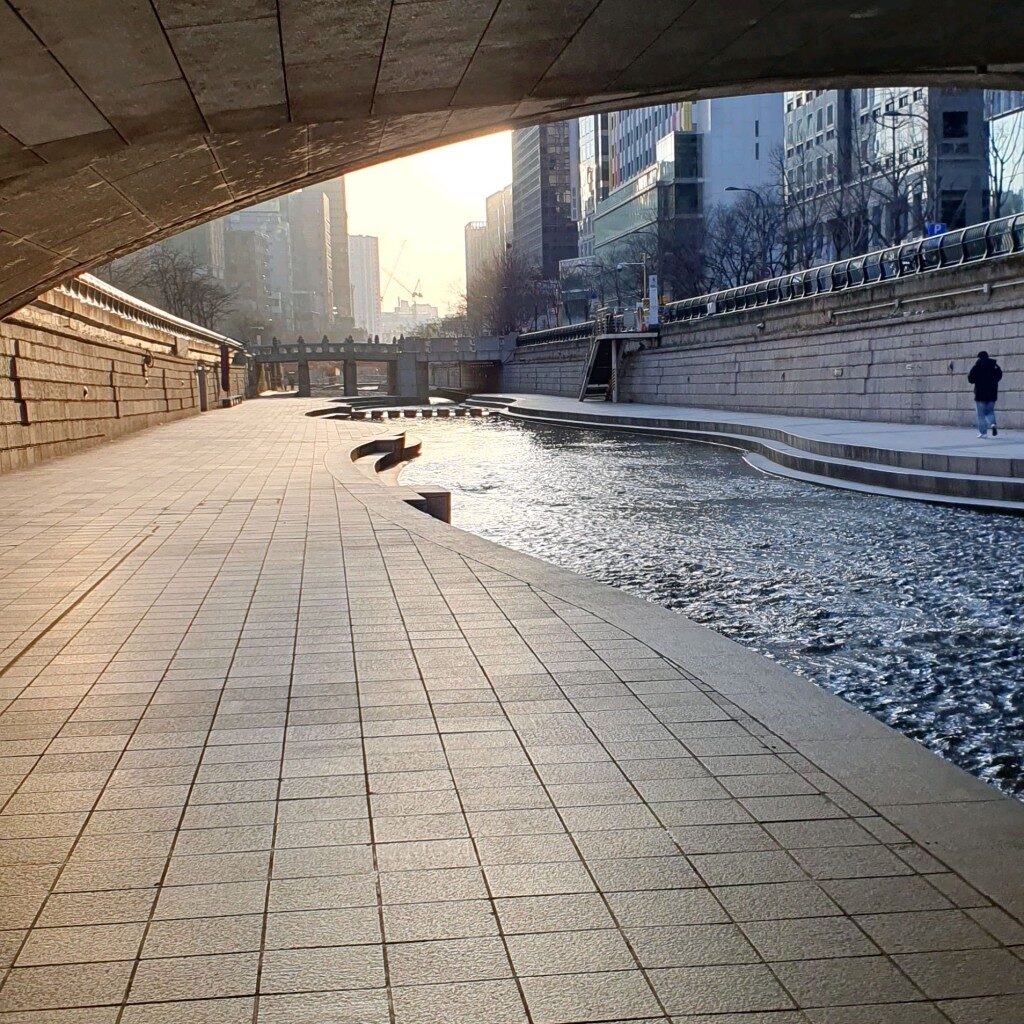Written byLoris Gautier
Posted on10 May 2024
Cheonggyecheon is not just a waterway that crosses Seoul it's a symbol of resilience and modernity. The nearly 11-kilometre-long artificial river, which meanders through the heart of the South Korean capital, offers a haven of peace away from the hustle and bustle of the city. Restored and reopened to the public in 2005 after decades spent under a freeway, it is now one of the city's major attractions, rich in history, culture and varied activities.

Cheonggyecheon is a striking example of urban transformation. Originally a natural watercourse, the river was progressively covered over during the 1950s and 1960s to make way for road infrastructure, responding to the city's rapid expansion and increasing traffic. It was only in the early 2000s that the Seoul government initiated an ambitious restoration project aimed at restoring the river to its original form as part of a vast urban revitalization program.
This renaturation project, which cost over $900 million, has not only brought the river back to life, but has also transformed the adjacent neighborhoods into pedestrian zones popular with locals and tourists alike. The story of Cheonggyecheon is a testament to Seoul's ability to marry heritage conservation with urban innovation.
Walks and Relaxation The walk along Cheonggyecheon is a must for anyone visiting Seoul. Lined with pedestrian walkways and punctuated by over twenty bridges, it offers a pleasant and accessible route for all. Visitors can admire the works of public art, waterfall walls and fountains, which enliven the route all year round.
Cultural Events and Festivals Cheonggyecheon: Cheonggyecheon is the scene of many cultural events, especially during traditional festivals such as the Seoul Lantern Festival, when thousands of lanterns light up the river, creating a magical spectacle.
To discover the Cheonggyecheon, there's nothing better than to start at the river's starting point, near the square. Gwanghwamunand follow its course all the way to its mouth in the Han River. This itinerary allows you to discover different aspects of Seoul, from its historic districts to its modern areas.
From Gwanghwamun to Dongdaemun This section of the promenade passes through several historic districts and offers breathtaking views of historic sites such as Gyeongbokgung Palace and Insa-dong, famous for its art galleries and antique stores.
From Dongdaemun to Majang-dong Majang: Continuing eastwards, the walk becomes quieter. Visitors can discover the Majang market, renowned for its fresh meat and seafood.
Dongdaemun Market Dongdaemun: Located in the immediate vicinity of Cheonggyecheon, Dongdaemun is Asia's largest textile market. It's a shopper's paradise, offering an impressive variety of clothes, jewelry and accessories.
Seoul Museum of Art The Cheonggyecheon Museum: This museum, located not far from the Cheonggyecheon spring, is a must for contemporary art lovers. Its temporary and permanent exhibitions feature both Korean and international artists.
Gyeongbokgung Palace The Cheonggyecheon Palace: Although slightly set back from the course of the Cheonggyecheon, this historic palace is easily accessible from the river and offers a fascinating insight into Korean architecture and history.
Cheonggyecheon is a veritable artery of life running through the heart of Seoul, offering residents and visitors alike a unique space where nature and urbanism coexist harmoniously. This exemplary restoration project has not only revitalized a once-neglected area of the city, but has also served as a model for similar initiatives around the world, demonstrating the positive impact of sustainable urban development.
Did you like our article?
Don't hesitate to subscribe to our free, spam-free newsletter!
Korea Exploration is committed to giving you the real opinions of the locals, according to Naver here are the translated opinions:
A pleasant last weekend in April~!! 😄
There are a lot of people out~ 😄
Families also take time to enjoy everyday life and create memories~ 😆
📸📸🏝🏝 🏖🏖 🏞🏞
(Foreign tourists from various countries are also busy taking souvenir photos~^^)
Morning visit to Cheonggye Square,
The trail is well laid out, and walking around while admiring the scenery is really rejuvenating ^^.
It rained late into the night,
So on my way out, I took a walk and got some fresh air!
If the weather had been fine, it would have been very busy.
and I probably wouldn't have been able to see well or take many photos.
But time and the hour were on my side,
and I really enjoyed my visit!